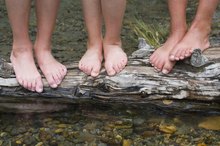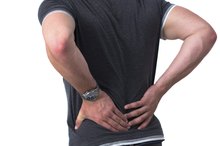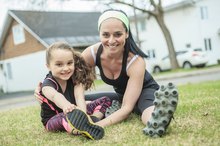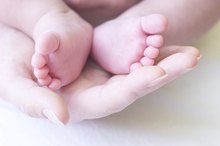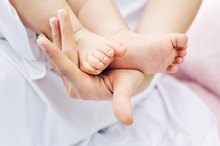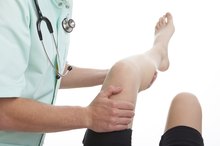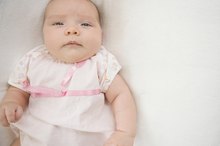What does fact checked mean?
At Healthfully, we strive to deliver objective content that is accurate and up-to-date. Our team periodically reviews articles in order to ensure content quality. The sources cited below consist of evidence from peer-reviewed journals, prominent medical organizations, academic associations, and government data.
- European Spine Journal: Acute Postural Adaptations Induced by a Shoe Lift in Idiopathic Scoliosis Patients
- European Spine Journal: Acute Postural Adaptations Induced by a Shoe Lift in Idiopathic Scoliosis Patients
The information contained on this site is for informational purposes only, and should not be used as a substitute for the advice of a professional health care provider. Please check with the appropriate physician regarding health questions and concerns. Although we strive to deliver accurate and up-to-date information, no guarantee to that effect is made.
Orthopedic Shoes for Scoliosis
Orthopedic shoes, heel lifts and orthotic inserts help correct posture in some people who have skeletal abnormalities. Doctors sometimes prescribe specialized shoes and orthotic shoe inserts for people with scoliosis, or sideways spine curvature. These devices can help reduce associated pain and prevent further progression of the condition, according to “Dynamic Chiropractic. 3”
If you are experiencing serious medical symptoms, seek emergency treatment immediately.
Warning
Many stores sell orthopedic shoes, orthotic inserts and heel lifts that are designed to fit the gait of someone with an “average” foot. Most orthoses you can buy at a store aren’t custom designed, which means they are less effective for anyone who doesn’t fit into the “average” category, according to the Department of Surgery at the University of Colorado School of Medicine. In fact, they may make scoliosis worse or create orthopedic problems in other parts of the body if they don’t fit properly. Custom orthoses prescribed by a doctor are more expensive, but the payoff is that they will provide more effective support.
- Many stores sell orthopedic shoes, orthotic inserts and heel lifts that are designed to fit the gait of someone with an “average” foot.
- Most orthoses you can buy at a store aren’t custom designed, which means they are less effective for anyone who doesn’t fit into the “average” category, according to the Department of Surgery at the University of Colorado School of Medicine.
Preventive Measures
Flat Feet in Teenagers
Learn More
Scoliosis most commonly occurs in children during the growth spurt that precedes puberty, according to MayoClinic.com. A child with asymmetrical leg growth may end up with imbalanced spinal growth, but using a heel lift — a wedge-shaped shoe insert — in the shoe of the shorter leg may provide extra support for his legs and promote balanced spinal growth. However, if one leg is shorter because the foot has poor arch development or because the child places excess weight on the inside of one sole, the child may need a specialized orthotic to support that foot in specific areas around the arch. If a child’s leg is functionally rather than anatomically shorter, his scoliosis may worsen if he wears a heel lift rather than an orthotic shoe insert.
- Scoliosis most commonly occurs in children during the growth spurt that precedes puberty, according to MayoClinic.com.
- A child with asymmetrical leg growth may end up with imbalanced spinal growth, but using a heel lift — a wedge-shaped shoe insert — in the shoe of the shorter leg may provide extra support for his legs and promote balanced spinal growth.
Research
Research shows that heel lifts can force a body with scoliosis into better alignment. In an article published in a 2001 issue of “European Spine Journal,” young patients with scoliosis had significantly reduced spinal curvature and improved postural adaptations such as better alignment in the pelvis when they wore appropriately fitting lifts 2. Orthopedic shoes and specialized shoe inserts may help prevent further progression of spine curvature in young people with asymmetrical legs and reduce back pain in adults with scoliosis. However, whether heel lifts can reduce existing spine curvature is uncertain, according to an article in "The New York Times Health Guide."
- Research shows that heel lifts can force a body with scoliosis into better alignment.
- Orthopedic shoes and specialized shoe inserts may help prevent further progression of spine curvature in young people with asymmetrical legs and reduce back pain in adults with scoliosis.
Considerations
Mild Lumbar Scoliosis Symptoms
Learn More
Orthopedic shoes and shoe inserts aren’t right for everyone, and they aren’t always the only line of treatment for someone who has — or is at risk of developing — scoliosis. Someone with scoliosis should see a doctor for a full spinal examination, X-rays and an assessment of her lower extremities, according to the “Dynamic Chiropractic." Depending on the type and severity of her scoliosis, she may also need to undergo physical therapy, wear a spinal brace or even undergo surgery to straighten her spine 3.
Related Articles
References
- The New York Times Health Guide: Scoliosis: Braces and Other Noninvasive Treatments
- European Spine Journal: Acute Postural Adaptations Induced by a Shoe Lift in Idiopathic Scoliosis Patients
- Dynamic Chiropractic: Children and Scoliosis
- American Academy of Orthopaedic Surgeons: Orthotics
- University of Maryland Spine Program: A Patient’s Guide to Adult Scoliosis
- American Association of Neurological Surgeons. Scoliosis
- Horne JP, Flannery R, Usman S. Adolescent idiopathic scoliosis: diagnosis and management. Am Fam Physician. 2014;89(3):193-8.
- Boston Childlren's Hospital. Congenital Scoliosis
- American Academy of Orthopaedic Surgeons. OrthoInfo. Neuromuscular Scoliosis
- Weill Cornell Medicine. Center for Comprehensive Spine Care. Scoliosis: Symptoms, Types & Treatments
- Wang J, Zhang J, Xu R, Chen TG, Zhou KS, Zhang HH. Measurement of scoliosis Cobb angle by end vertebra tilt angle method. J Orthop Surg Res. 2018;13(1):223. doi:10.1186/s13018-018-0928-5
- Karimi MT, Rabczuk T. Scoliosis conservative treatment: A review of literature. J Craniovertebr Junction Spine. 2018;9(1):3-8. doi:10.4103/jcvjs.JCVJS_39_17
- American Association of Neurological Surgeons. (2019). Scoliosis.
- Children's Hospital of Philadelphia. (2019). Congenital Scoliosis.
- Dewan MC, Mummareddy N, Bonfield C. The influence of pregnancy on women with adolescent idiopathic scoliosis. Eur Spine J. 2018 Feb;27(2):253-63. doi:10.1007/s00586-017-5203-7
- Hey LA. (2018). Scoliosis in the adult. Atlas SJ, ed. UpToDate. Waltham, MA: UpToDate Inc.
- Horne JP, Flannery R, Usman S. Adolescent Idiopathic Scoliosis: Diagnosis and Management. Am Fam Physician. 2014 Feb 1;89(3):193-98.
- Scoliosis Research Society. (2019). Scoliosis.
Writer Bio
Christa Miller is a writing professional with expertise in massage therapy and health. Miller attended San Francisco State University to earn a Bachelor of Arts in creative writing with a minor in journalism and went on to earn an Arizona massage therapy license.
